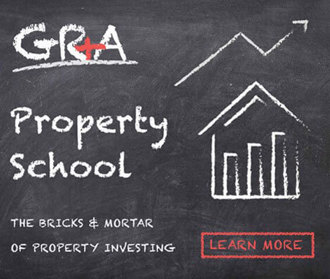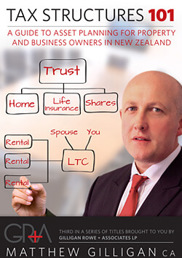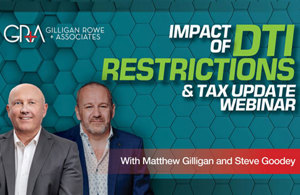
Two-Year Bright-Line Test
Currently the IRD have a variety of provisions that they can apply to levy income tax on gains made on the sale of property. One of those provisions stipulates that gains are taxable where the property sold was originally acquired with the intention of resale. The difficulty the IRD faces in applying this legislation is proving the taxpayer's intention at the time of acquisition. (Taxpayers regularly change their minds, sell property for a gain, and don't pay tax.) In response to this, the Government has announced that from 1 October 2015, property that is bought and sold within a two-year timeframe will be subject to automatic tax on any gains, irrespective of the intention at the time of acquisition. Here are some relevant points and thoughts in response to this proposal:
- Once legislated it will apply only to property acquired on or after 1 October 2015. Accordingly, existing property will not be subject to this two-year bright-line test – but it will continue to be subject to the existing rules.
- There will be exemptions for homes, inherited property and transfers pursuant to relationship property agreements.
- No legislation has been drafted yet which means critical detail such as the definitions of what qualifies for the exemptions etc. are unknown. We expect draft legislation to be released in August.
- One point of detail we will be watching quite closely is the treatment of any losses produced on property sold within two years.
- I believe this rule will have an impact on the volume of property sales because there will be an element of “lock in” as property owners who otherwise might have sold within two years hold on to property for longer to fall outside the two-year period.
- That said, I don't see the rule having a material impact on market prices. Firstly, very few transactions will be affected on the basis that many transactions already fall outside of the two-year period or fall within the exemptions (i.e. sale of private homes). Further, the fact that property markets in other countries with comprehensive capital gains tax regimes go through booms similar to that experienced in New Zealand, suggests tax does not negatively affect the market.
This is Reserve Bank policy and is proposed to take effect from 1 November, but as of late July is in full effect. It is focused on residential rental properties in the Auckland Council area and will require investors to have at least a 30% deposit. Note this 70% threshold does not apply to the financing of new builds. The Reserve Bank has also proposed that the “speed limit” for high loan-to-value ratio borrowing outside of Auckland be increased from 10% to 15%. What this means is that the banks will have more scope to lend at beyond 80% gearing level on properties outside of Auckland.
These LVR restrictions are introduced to try and curb Auckland's house price inflation, while not adversely affecting the regions, as well as to protect the banking system from a future credit crisis. In effect, they allow the Reserve Bank to target “hot regions” in New Zealand that are experiencing rapid price inflation, without penalising other areas that might be in recession. This is a new tool for the Reserve Bank, and clever stuff, in my view. It has allowed the RBNZ to drop the Official Cash Rate across New Zealand, providing relief to farms, dropping the exchange rate, and assisting an export-led recovery, while dampening credit conditions with a lower LVR in the area the RBNZ sees as needing dampening – Auckland.
With the new LVR rules pushing many into the regions and other cities where 80% leverage is still possible, this must boost growth in these regions, especially coupled with the ripple effect from Auckland's lack of affordability. Plainly speaking, I see very positive signs for the smaller centres and cities from this.
- The lower cost base of many of the residential investments in small towns means that capital maintenance over the long term is a larger proportion of the total capital growth, potentially eroding the real returns. For example, if you only get $50,000 growth in 10 years on a $100,000 house in a small centre (5% x 10 years of a $100,000 cost base), and your capital maintenance (the stuff you do every decade that is more expensive) is say $25,000, then half of your capital growth goes to reinstating the house. Whereas in a big city, the 5% growth on the larger cost base means you can pay capital maintenance from one or two years' capital growth. This is especially true in Auckland.
- The operating expenses, as a percentage of the gross dollar value of the rent, is a larger percentage on assets in small centres with a lower cost base. This reduces cash flow/net yield to similar returns as derived in the main centres, and maintenance can easily make the rental return negative.
- Operating expenses will be roughly the same dollar value in a main centre as in the smaller centre, but the main centre rents will be double or triple the dollar value of the small town.
- I provide an example in the regional variances chapter of this, where the Rotorua house has $6,000 of opex, which is 60% of rent, whereas the Auckland house also has $6,000 of opex which is only 25% of rent. Small blowouts in maintenance or unexpected vacancy can therefore very quickly ruin cash yields on assets with the smaller cost base.
- In summary, it costs the same to maintain a three or four-bedroom house in Auckland as it does a house in a small town (in gross dollar terms). However, on smaller value assets, the operating expenses and maintenance costs incurred over both the short and long term are a much larger proportion of the rents and capital growth derived.
- In addition (in relation to small town investing), I especially have concern for single employer towns/one-horse towns, where the bulk of the population becomes unemployed if the employer goes out of business.
Conclusion
The above discussion begs the question as to what the impact of these rules will be, and what investors should do as a result. Our view is that the Auckland property market is peaking and these rules will contribute to the deceleration. However, the factors that have been responsible for the runaway market of the past few years will probably continue to prevail for the next year or so, but I would not be surprised to see a downturn come circa 2017. As always, quality investment will hold up over time, but we are particularly encouraging clients to focus on property in Auckland that has the greatest capital growth potential under the proposed Auckland Unitary Plan. It also might be time to have a look at some of the main centres outside of Auckland that have not experienced the same runaway growth in recent times. For up-to-date property investment education, book in to one of our upcoming events.

Matthew Gilligan
Managing Director and Property Services Partner
Did you like this article? Subscribe to our newsletter to receive tips, updates and useful information to help you protect your assets and grow your net worth. We're expert accountants providing expert advice to clients in NZ and around the world.
Disclaimer: This article is intended to provide only a summary of the issues associated with the topics covered. It does not purport to be comprehensive nor to provide specific advice. No person should act in reliance on any statement contained within this article without first obtaining specific professional advice. If you require any further information or advice on any matter covered within this article, please contact the author.
Comments
Testimonials
Although I have not read the book cover to cover as of yet, Matt’s new book is absolute ‘top shelf’ material which without hesitation I would arguably put ahead of a few other well known authors that I have held in high regard for many years due to the fact of not finding anyone to surpass them – now I have. The book shows thorough research on a range of topics with clear concise kiwi examples. The books title does not do it justice – heres hoping a ‘property 201’ book is in the pipeline… - Bernard - October 2015
Gilligan Rowe and Associates is a chartered accounting firm specialising in property, asset planning, legal structures, taxation and compliance.
We help new, small and medium property investors become long-term successful investors through our education programmes and property portfolio planning advice. With our deep knowledge and experience, we have assisted hundreds of clients build wealth through property investment.
Learn More








































